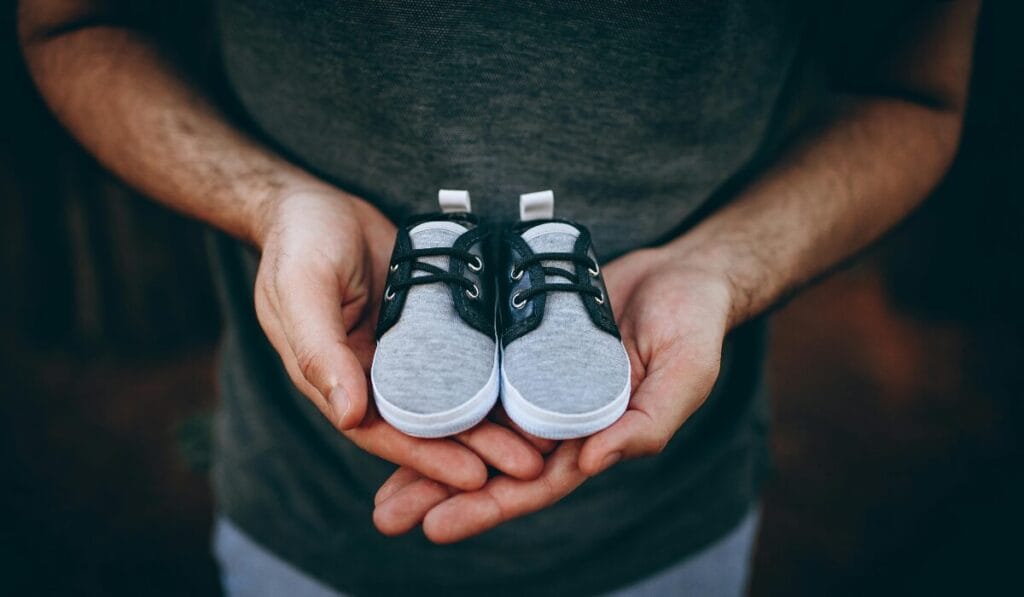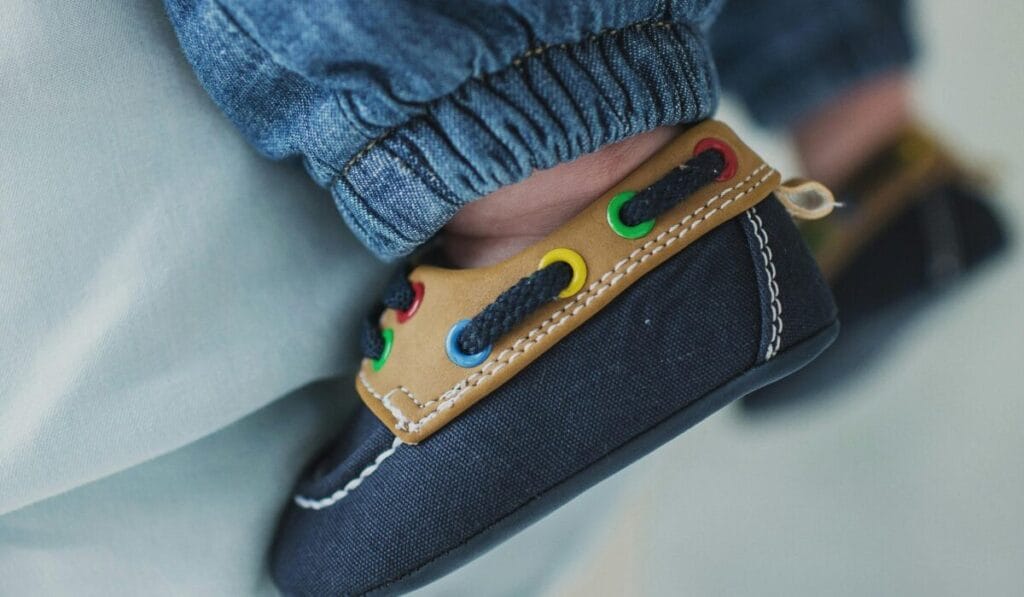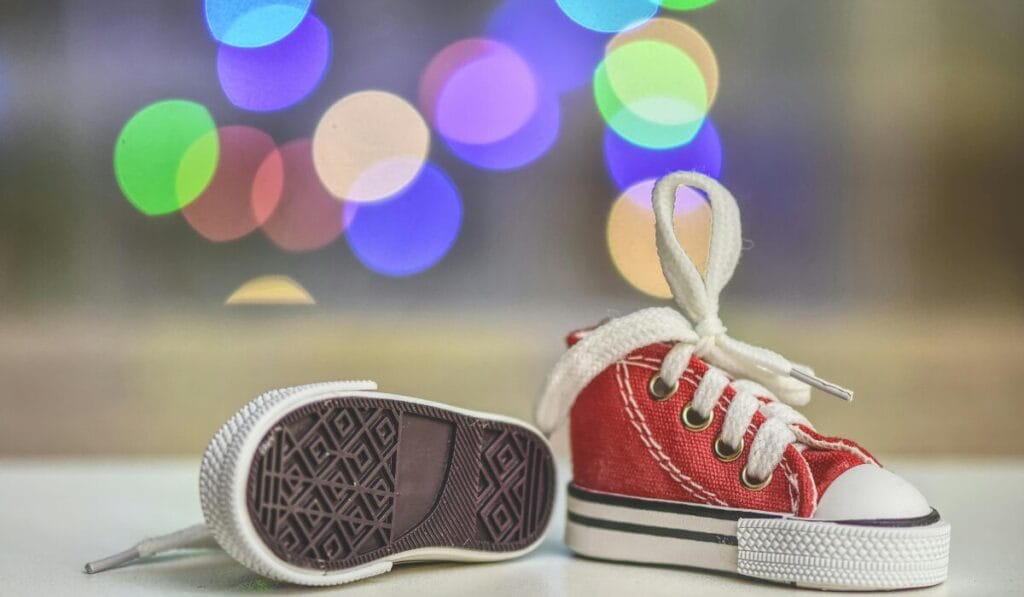Shoes made for children are specially designed to maintain balance, protect little feet, and encourage natural movement. With soft soles, lightweight construction, and a grippy design, your child’s comfort and confidence are built into these shoes. Every parent knows that baby walking shoes are an essential tool for them as their little ones take their first steps towards independence from infancy. Choosing the right shoes to help the baby Walk makes a significant difference in their comfort, safety, and overall development.
The right shoes can help babies walk, stabilize them, and protect their sweet little feet from injuries and sprains, while poorly designed shoes can hinder their ability to walk naturally. This guide will walk you through everything parents need to know about choosing the best shoes for their child, addressing factors such as fit, good materials, and good design, as well as professional advice and frequently asked questions. Need to know if you read it properly and completely. And if you’re looking for a complete guide to adult footwear, don’t miss our ultimate guide to the best walking shoes.

Why necessary Shoes To Help The Baby Walk
Since children’s feet are delicate and continue to grow with age, unlike adult feet, the bones in children’s feet are soft, so the wrong shoes can be a significant hindrance to their natural growth. Walking barefoot is an example for children who are learning to walk because it strengthens their muscles and helps them have better balance and stability. However, when walking outdoors or in unprotected areas where there is rough ground, etc., their proper footwear becomes very important for them.
Benefit’s
A few benefits that show why shoes are essential for children
- Protection: Protects baby’s feet from sharp objects, rough surfaces, and extreme temperatures.
- Support: This can provide stability for a baby’s wobbly feet while ensuring they form a natural walking pattern.
- Traction: Helps baby avoid slips, falls, and all possible hazards with skid-resistant soles.
Features to Look for in Baby Walking Shoes
If you are looking to buy shoes to help your baby walk, keep these principles in mind:
1. Soft, flexible soles
Soft, flexible shoe soles mimic the barefoot experience of children and also allow their feet to move naturally. Therefore, it is best to look for shoes with light rubber or the best soft leather soles.
2. Breathable materials
Did you know that children’s feet sweat more than adults? Therefore, to keep your children’s feet dry and comfortable, use sweat-wicking materials such as cotton, mesh, or Leather shoes.
3. Excellent fitting
Such shoes may cause blisters or deformities if the shoe does not fit the foot properly. Make sure there is a thumb-width or a little more or less space between the child’s toes and the tip of the shoe. They should also fit comfortably without constricting the heel, which will provide comfort to the baby.
4. Lightweight shoe design
Often, heavy shoes tire the child and also disturb his natural gait. So choose lightweight shoes for easy movement.
5. Adjustable strap
As the child grows, so will the foot; so Velcro straps or laces allow better adjustment as the child’s foot grows, unlike other items. These features also make the shoes easy to put on and take off; this is the biggest problem with the shoes, and I am facing this myself.
6. Necessary round-toe box
You may have also noticed that babies hold their toes while learning to walk. That’s why a round, spacious toe box allows these children’s toes to spread naturally for better balance. If you think so?

Where your children may need shoes are as follows:
Wise men and experts say that if you want to teach a child to walk, first make him stand barefoot. With this, they learn to stand up and take their first steps indoors, which is a source of great joy. Shoes should be introduced to children when they want to go outside or walk on unsafe surfaces.
- Walking strong within your own home and showing interest in exploring and venturing outside.
- Going over hard surfaces such as gravel, pavement, or uneven surfaces such as grass.
Tips from pediatricians and podiatrists
1. Focus on developmental stages
As common sense suggests and pediatricians recommend, avoid wearing tight shoes that restrict natural foot movement.
Also, read this guide by Healthline on how babies learn to walk — it covers early walking signs, foot development, and helpful tips for parents during this exciting phase. Dr. Emily Richards, an excellent pediatric podiatrist, explains:
“Children’s feet are not the same as adults’, but they grow very quickly. Therefore, choosing flexible and well-fitting shoes ensures that there are no restrictions on their growth.”
2. Regular foot measurements
It may also be a question of how much a baby’s foot grows in a year, so the answer is that a baby’s feet can grow a full size every 2-3 months during their first year. So when you want to buy a shoe for a child, take an expert with you or go to the shop to fit the shoe on the child’s feet, or take the correct measurement of the child’s shoe from an expert.
3. Research the discomfort
Fitting shoes also has its symptoms, some of which include redness on the feet, blisters, or your child frequently removing the shoes. Ensure that they are comfortable and happy wearing them. If they are not, then understand that there is something wrong with the shoes.

Best Shoes to Help Baby Walk
What are the best shoes for kids so here are some reliable options of shoes for kids learning to walk.
1. Molded shoes
offer brands such as Robeez and Stride Rite soft solid shoes that protect the feet while allowing flexibility and natural movement.
2. Barefoot-inspired shoes
such as boobs shoes that imitate barefoot and also promote the natural development of the feet.
3. Anti-slip shoes
Anti-slip shoes with excellent anti-slip soles, such as pedilids, are ideal for the inner surfaces of the sliding.
4. Sandals with support in the heat
This item is for heat, open-toe sandals with adjustable straps and strong soles that also work well to walk out. People also wear them at functions.
If you’re looking for more options, you can check out our full guide to the best early walking shoes, a comprehensive resource. And also check one of our popular lists of products.
What Experts say
Whenever it comes to the use of shoes or anything, the opinion of experts is given due weight. Here too, the opinions of a few experts have been mentioned as to what they say are the features that children’s first walking shoes must have. So let’s see.
1. Doctor Joseph G. Khoury Says
Joseph G. Khoury, MD, an orthopedic surgeon at Nemours Children’s Health in Florida, says, “Choose a shoe that does not interfere with the natural abilities of the foot, the upper is soft, the ankle is below the ankle, the sole should be thin, it is easy to bend and flex in the middle, also ensure the fit to avoid blisters”.
Source: parents.com
2. According to Austin Foot
Austin Foot and Ankle.com is a podiatrist opinion website featuring expert opinions. It is written on it that “an important part of children’s foot development is that their feet move freely. This strengthens the feet and muscles, preparing them for crawling and jumping. It is also important to have space for the feet in children’s shoes”.
Source: Austin Foot and Ankle.com
Real User Review
On the topic of whether anyone has used the children’s walking shoes or not, here will be a statement from some users that they have used such shoes and have gotten the best results. It has been proven from these reviews that such shoes are found and people use them, so let’s see some of the best platforms.
Review From Walmart
These shoes are light and not annoying; they are perfect for children learning to walk for the first time.
Source: Walmart.com
Review From Zappos
I bought these shoes for my one-year-old because he is starting to walk. I love these shoes because of the softness of their leather. I ordered these same shoes for my daughter 7 years ago, and I still order them. I will not buy any other shoes as long as I have these.
Source: Zappos.com
Conclusion of Shoes To Help The Baby Walk
Shoes also play an important role in teaching children to walk, which has a great impact on their comfort, safety, strength, and growth. It is especially important to look for flexible, sturdy, and well-fitting shoes made of breathable materials to ensure that they enjoy their hiking without any hindrances. Regular consultation with pediatricians and podiatrists, and choosing the best shoe for your child with common sense, is very important.
Paying attention to your child’s individual needs is so important, you can help them take confident, happy steps into the world if you pay attention!
FAQs
Q1. Do shoes help babies walk better?
Yes, but most doctors advise children to walk barefoot because walking barefoot strengthens their muscles and improves balance. However, when children can walk outside, experts recommend non-slip shoes with soft soles, because protection from rough surfaces, injuries, and cold outdoors becomes essential.
Q2. What is best to help a baby walk?
The most helpful thing for children to learn to walk is walking barefoot on soft ground. This maintains balance and muscles. Parents should continue to teach children to walk by holding their hands. They should protect children from wheeled walkers, although it is okay to use toys.
Q3. At what age do babies need walker shoes?
Young children do not need walking shoes at all; however, shoes are recommended from 9 to 18 months, and that too with soft soles. Before this age, walking barefoot on soft, smooth ground is very beneficial for children’s health.
Q4. What should a baby wear when learning to walk?
Children should not wear anything when learning to walk. Start by walking barefoot. When they reach the age of 9 to 15 months, use non-slip, soft-soled shoes when it is time to go outside. Similarly, wear socks in the cold and avoid heavy shoes altogether.
Q5. How soon can we put shoes on our child?
You can introduce shoes when the baby starts walking outside or on uneven surfaces, but before that, it is of no use. Indoors, let them be barefoot to build strength and balance because walking barefoot is the most important thing in the first place.
Q6. How often should your child’s shoes be changed?
Every child’s foot grows rapidly, so check and research the fit of shoes every 2-3 months. When shoes become tight or break, just replace them.
Q7. Are hard-soled shoes harmful to children?
Yes, hard-soled shoes can affect and restrict the natural movement of the foot and can also affect muscle growth. For children, choose special corn rams or flexible soles.

